The TP-LINK Archer C9 is not the most stylish router that we have seen, but it is hardly an ugly duckling either. The router itself stands upright (it is not possible to position it in any other orientation) and is finished in gloss white plastic.
TP-Link have kept the branding on the subtle side, with a small local located in the middle of the gloss plastic sheet which finishes the front of the unit.
We find a series of eight LED indicators which span the top of the router, and are located directly below the three antenna. These are removable and can be positioned in multiple orientations.
Turning the router around reveals the extensive hub of connections on the reverse side. From left to right we find a USB2.0 port, the WPS/Reset button, an RJ-45 Ethernet jack to connect the router to the internet, four further RJ-45 Ethernet jacks which act as a switch, the power button and the DC-in jack.
In addition to the connections on the rear of the router we find a USB3.0 port and a WiFi button on the right hand edge of the router.
 KitGuru KitGuru.net – Tech News | Hardware News | Hardware Reviews | IOS | Mobile | Gaming | Graphics Cards
KitGuru KitGuru.net – Tech News | Hardware News | Hardware Reviews | IOS | Mobile | Gaming | Graphics Cards


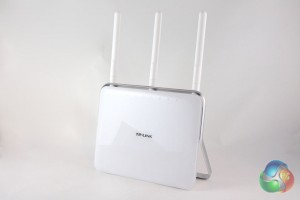
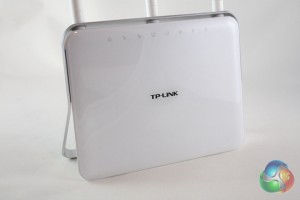
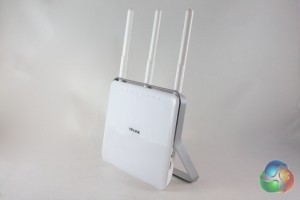
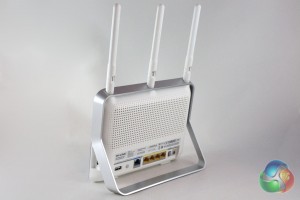
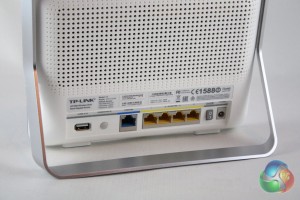
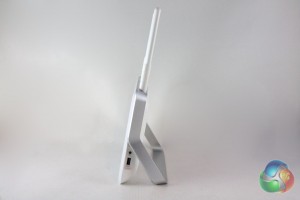
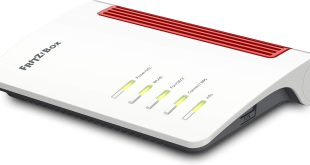
There is a comment where the author types “Tenda” instead of “TP-Link”. I believe they are completely separate companies, absolutely no connection and from all the radio-chipset tests, use completely different components. TP-Link is earning a great reputation while Tenda has earned an opposite one.
I don’t criticise the Mounting Orientation limitation. Just about every router is meant to be mounted one way OR another way. This can be laid on its side, after all. AND the stand (or frame) can be clamped sturdily to any other object for any multitude of mounting orientations.
What you SHOULD criticise is the antennas are NOT moveable. They are screwed into the frame then into the case (like most swivel antennas) but the frame locks them into one and only one orientation. It’s not the router that is the problem – it’s the lack of swivelable-moveable antennas, and more and more studies show it’s the antenna orientation that is THE problem or THE solution for better signals.
Not this “vertical only” mounting complaint.
Also, your comments about powerline adapters make them sound like Be-All / End-All solutions. They’re NOT. With most dwellings’ wiring configurations, they work in some rooms, but not others because of circuit breakers, wiring construction faults or whatever. Fortunately, the setup is indeed very easy – “two buttons and they work.” Or rather, they may not work. But this too is rather a luxury – Powerline Adapters have that rather wonderful feature – they work out of the box, or they don’t! There’s no settings to adjust, only locations inside a dwelling to test. They’ll either work after a few minutes of sync’ing attempts, or they never will; and then move them to a different power-outlet and try again with the “two button” setup. Very quick, compared to most other networking products! Buy locally, and it’s much easier to return them IF they don’t work.
◔◔◔◔Make over 13k/M0NTH@af30:
Going
Here you Can
Find Out
►►► http://WorkOnlineMedias.com/profitable/2015…